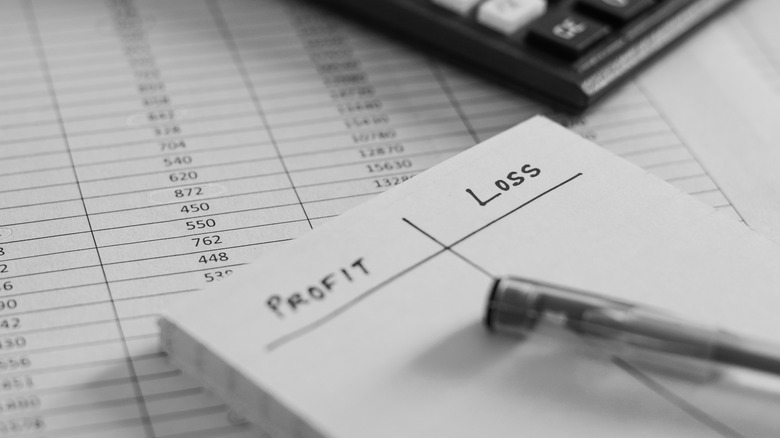What's A Profit And Loss Statement And How Does It Work?
For businesses big or small, incorporated or running out of your home office, it helps to have an overview of how your business is performing. One easy way to measure the financial shape of your company is to put together a profit and loss statement. Otherwise known as an income statement, a profit and loss statement takes vital information from the sales and expenses of your business and weighs them together in order to determine if your enterprise has made money in a certain period of time or has recorded a loss, according to U.S. News & World Report.
Having this document prepared by yourself or an accountant can aid you in comparing how your company has been doing from year to year. By tracking your company's performance using a profit and loss statement, you can possibly forecast how you'll fare in the future or where you need to focus your efforts to make your business more profitable. Let's take a look at exactly what information you need in a P&L statement and how it works to give you the final numbers you're looking for.
Breaking down the information for a profit and loss statement
First, start by filling out your business name at the top of your sheet, followed by the period of time the data is for. This could mean you're preparing a monthly, quarterly, or yearly income statement. Then you can start gathering the numbers that represent the variety of income your business generates. The sales and revenue that you gather should be the net income amounts — that is the sales before taxes — and placed at the top of your profit and loss statement. These sales can be broken down into categories, such as net product sales or net service sales, for example. After all the data is collected you can add them up in order to get your total net sales final calculations
Next, gather all of your expenses and place them under the category of "operating expenses." This can include sub-categories, such as your cost of goods sold, marketing expenses, office supplies, and rent. After all of your expenses are broken down and added up, then you can calculate your total operating expenses. Lastly, deduct any income taxes or interest that you owe. For your final calculations, you take your "total net sales" minus your "total operating expenses" minus your "taxes," and if your final number is positive, then your company has a recorded net earnings amount. If it's a negative number, then you will have a net loss.

